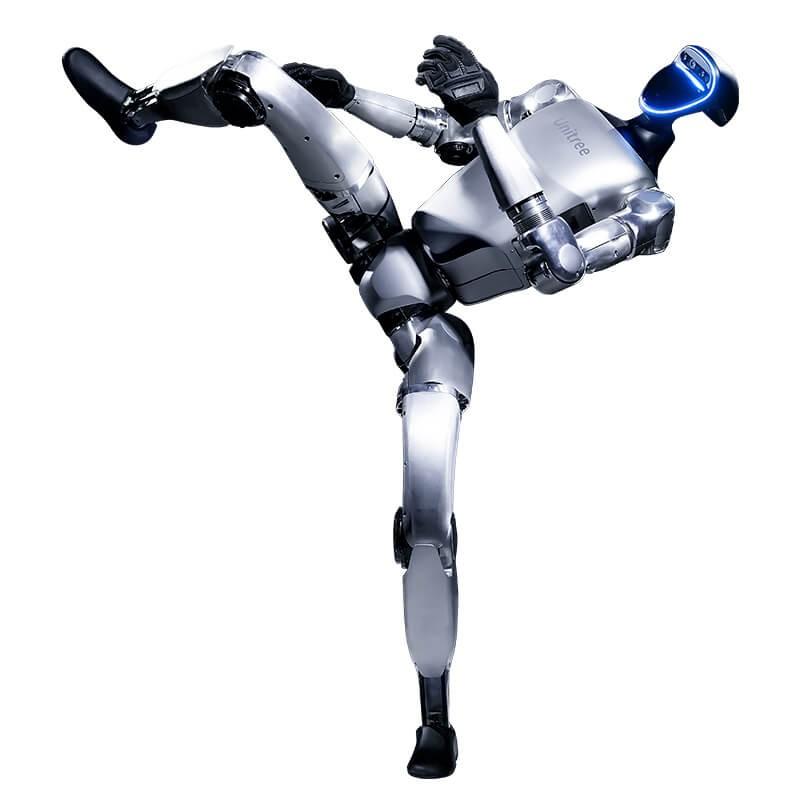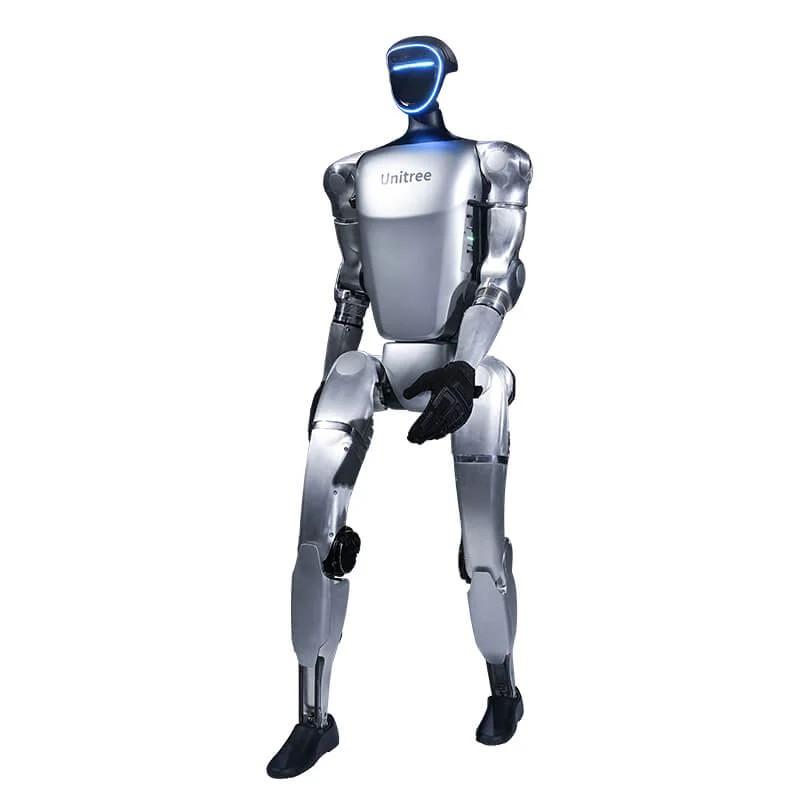Key Features & Capabilities
Compact & Portable Design
Standing size: ~1320 × 450 × 200 mm
Folded size: ~690 × 450 × 300 mm
Weight (with battery): ~35 kg
Flexible Configurations
Standard G1: 23 degrees of freedom (6 per leg, 5 per arm, 1 waist)
EDU / Ultimate versions: Up to 43 DOF with additional joints and dexterous three-fingered hand
High-Performance Joints
6 DOF per leg, 5 DOF per arm
Torque capacity up to 120 N·m
Payload capacity: ~2–3 kg per arm
Intelligent Motion Control
Supports imitation learning and reinforcement learning
Force-position hybrid control for precise object handling
Advanced Perception Systems
Equipped with 360° LiDAR and depth cameras
Enables accurate environmental awareness and 3D perception
Dynamic Motion Performance
Walking speed: ~2 m/s (7.2 km/h)
Capable of agile actions such as backflips, climbing, and stable load-bearing steps
Battery & Autonomy
Runtime: ~2 hours under standard operation
Quick-release battery for uninterrupted use
Applications
Research & Development – Ideal for AI, robotics, and machine learning studies
Education – A hands-on platform for universities and training programs
Medical & Teleoperation – Supports remote diagnostics and assisted medical tasks
Social Robotics – Demonstrates natural movements, interactions, and expressive gestures
| Feature |
Specification / Notes |
| Dimensions (Stand/Fold) |
~1320×450×200 mm / ~690×450×300 mm |
| Weight (with battery) |
~35 kg |
| DOF (Standard / EDU) |
23 / Up to 43 with advanced configuration |
| Arm Payload |
~2–3 kg depending on configuration |
| Joint Torque |
Up to ~120 N·m |
| Speed |
~2 m/s (7.2 km/h) |
| Perception Hardware |
Livox MID360 LiDAR & Intel RealSense D435i |
| Runtime |
~2 hours (quick-release battery) |
| Notable Achievements |
“Uncle Bot” viral sensation; medical telesurgery research |


